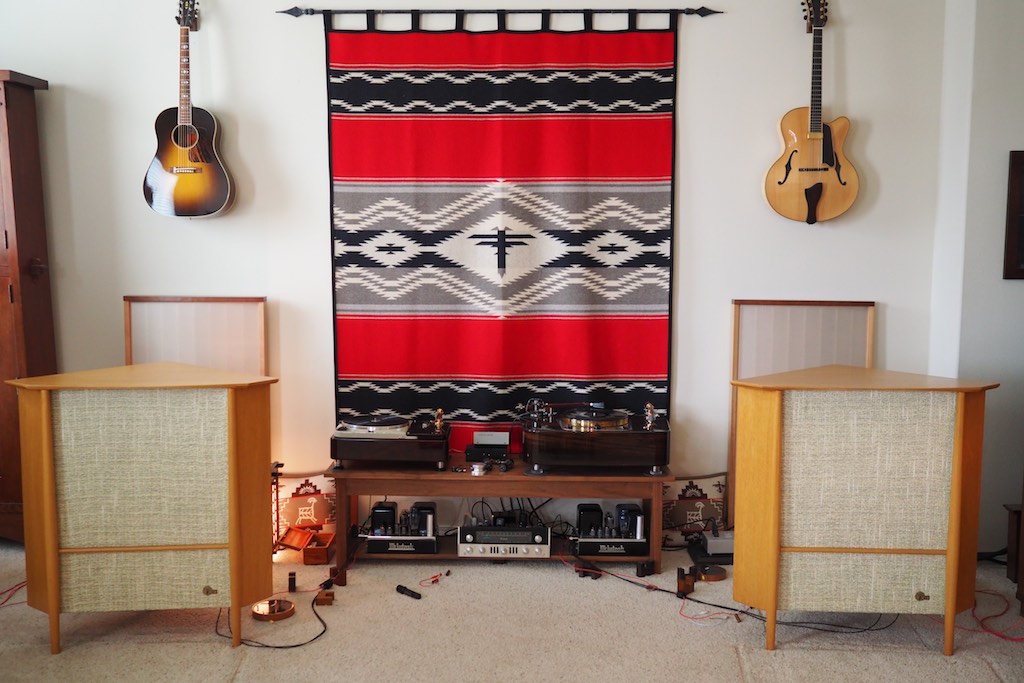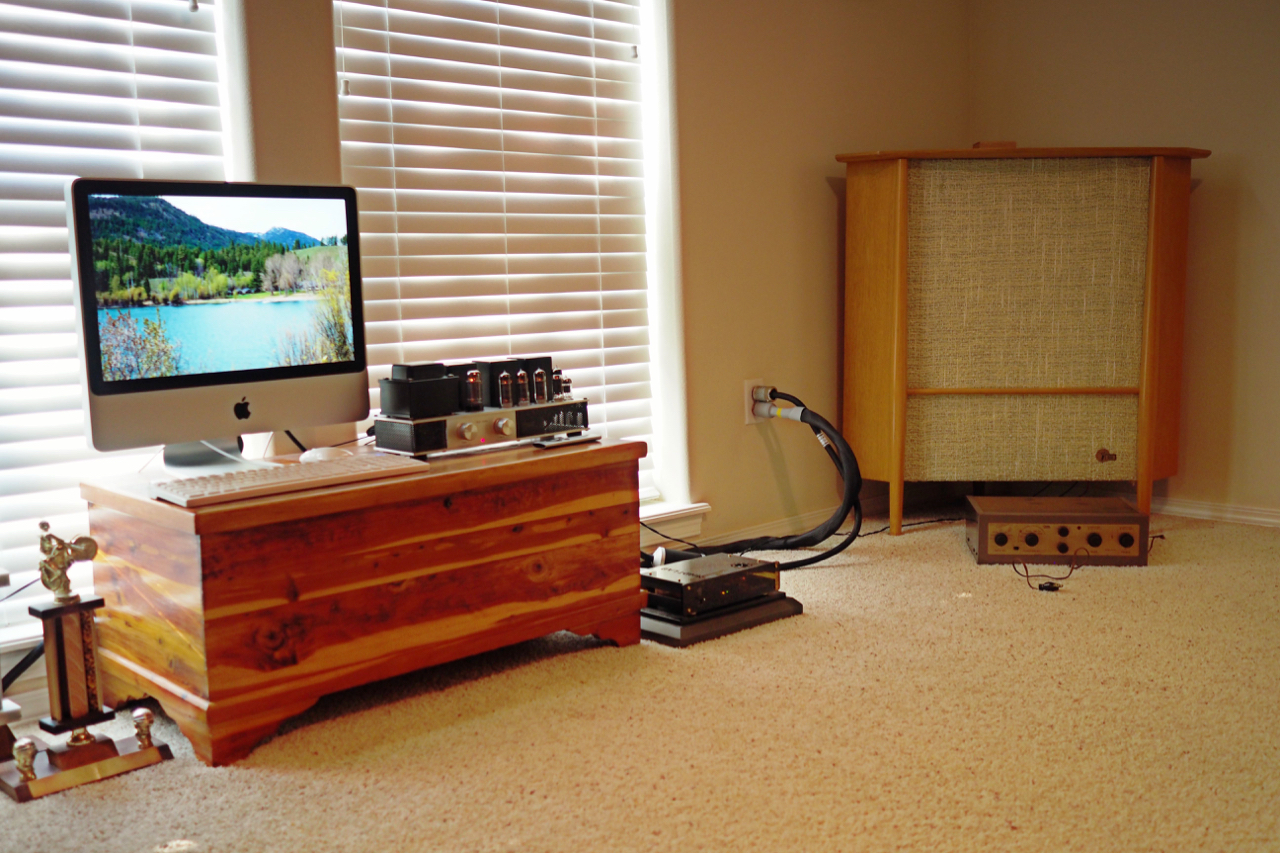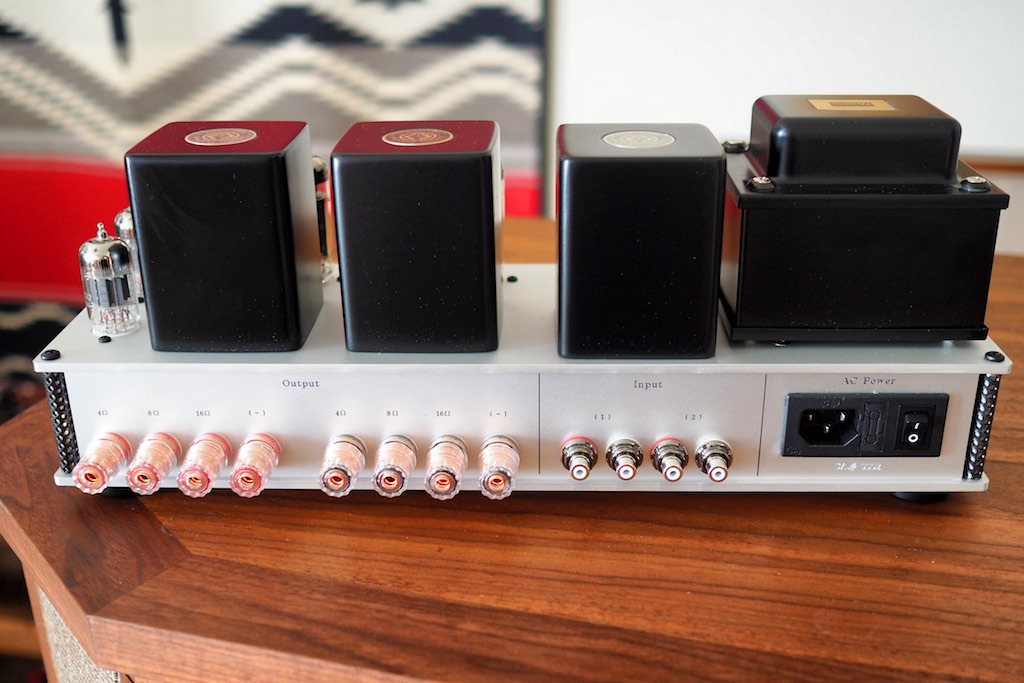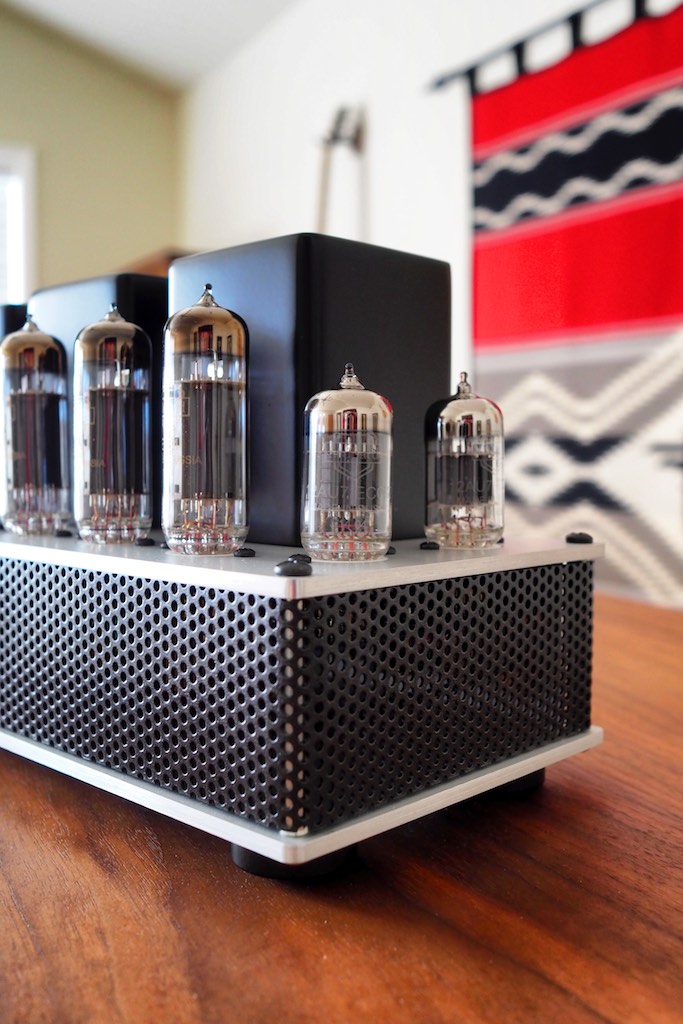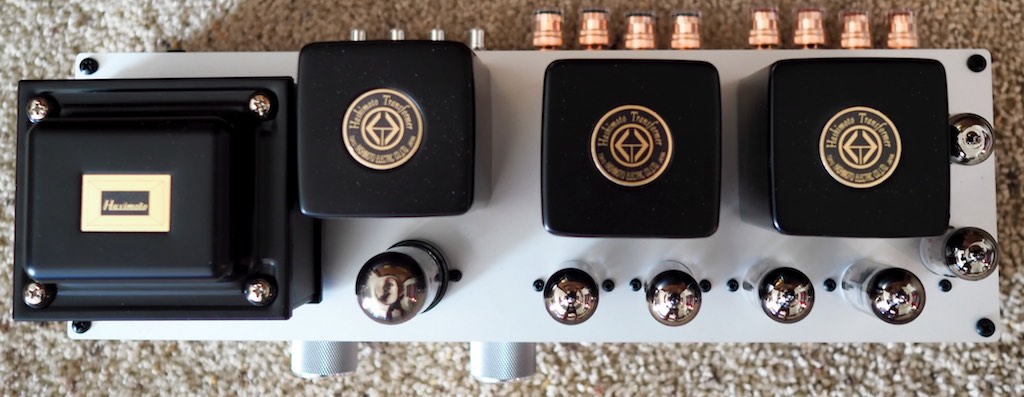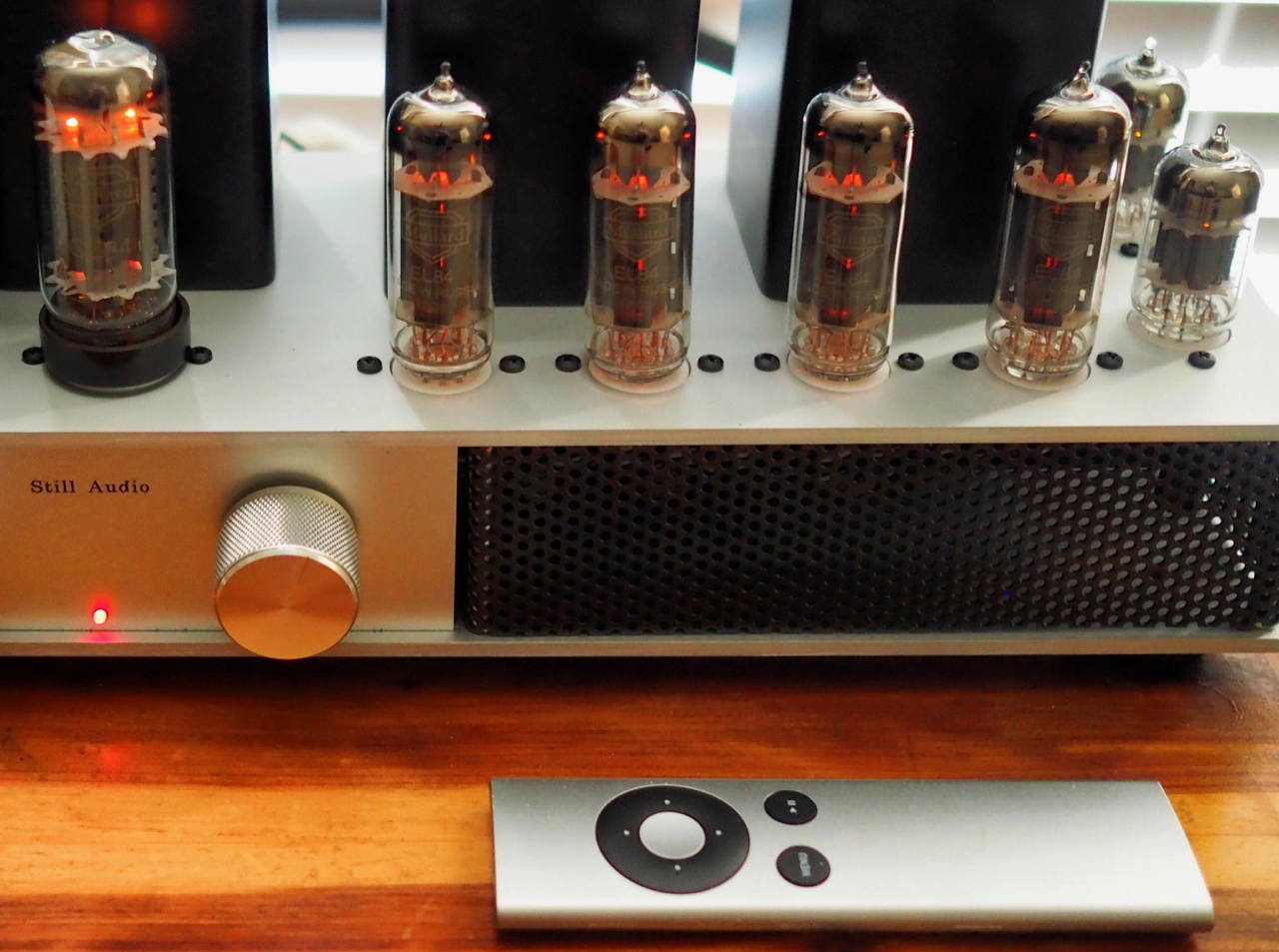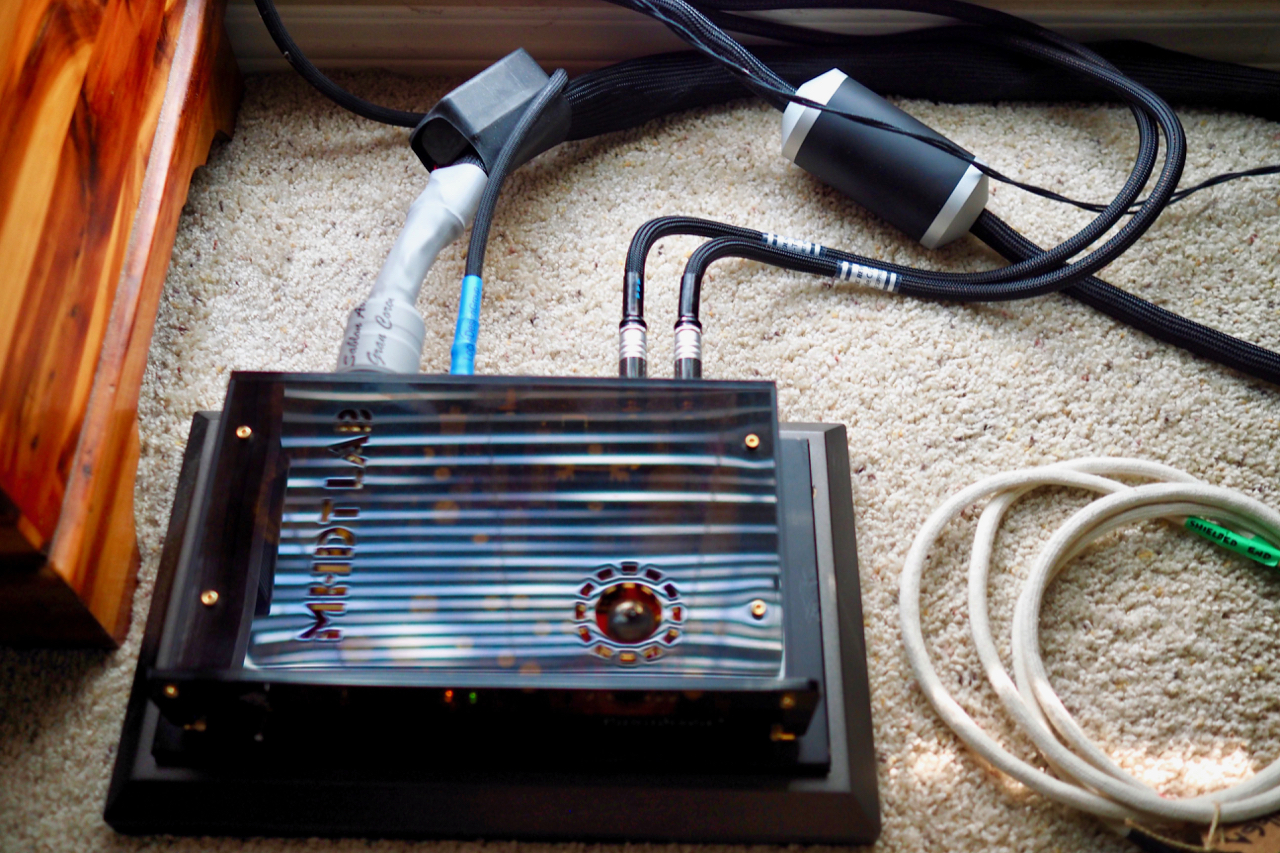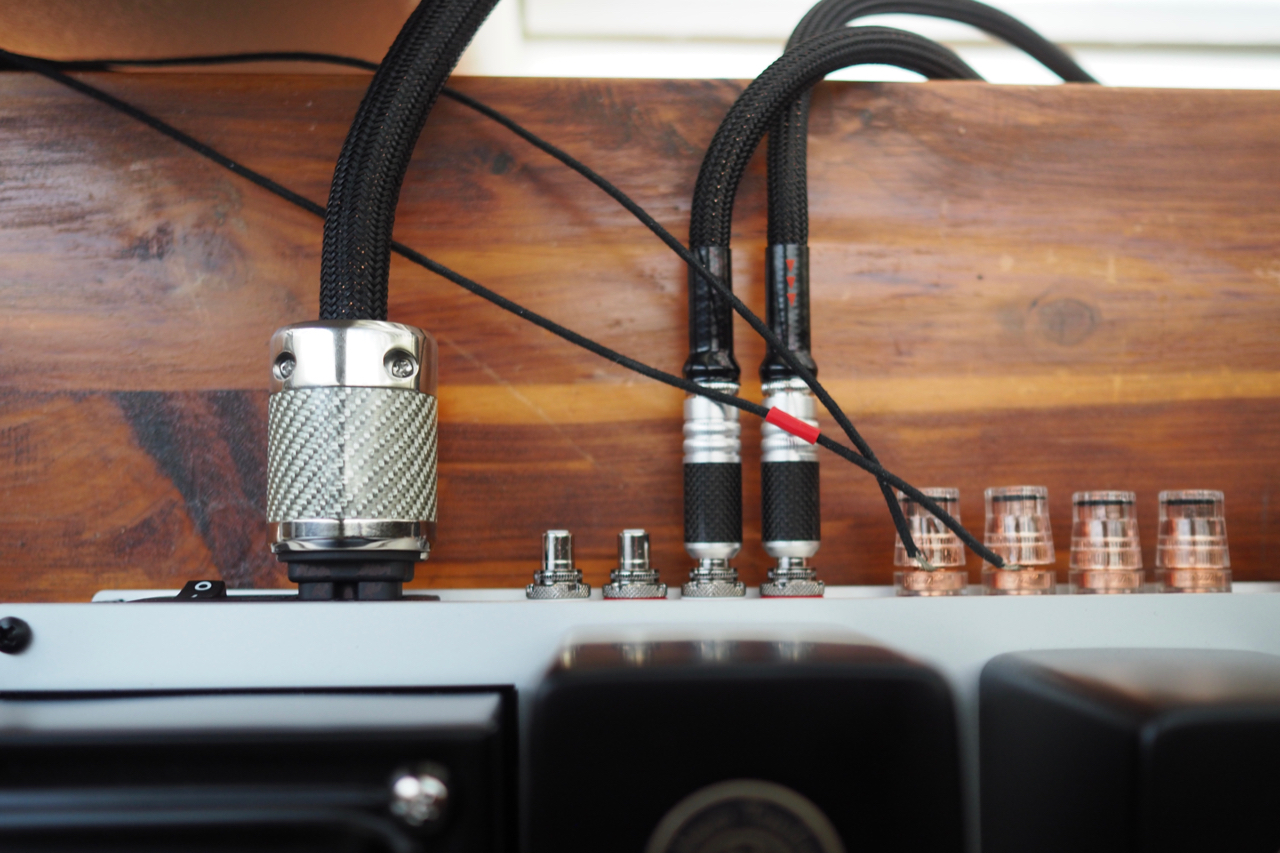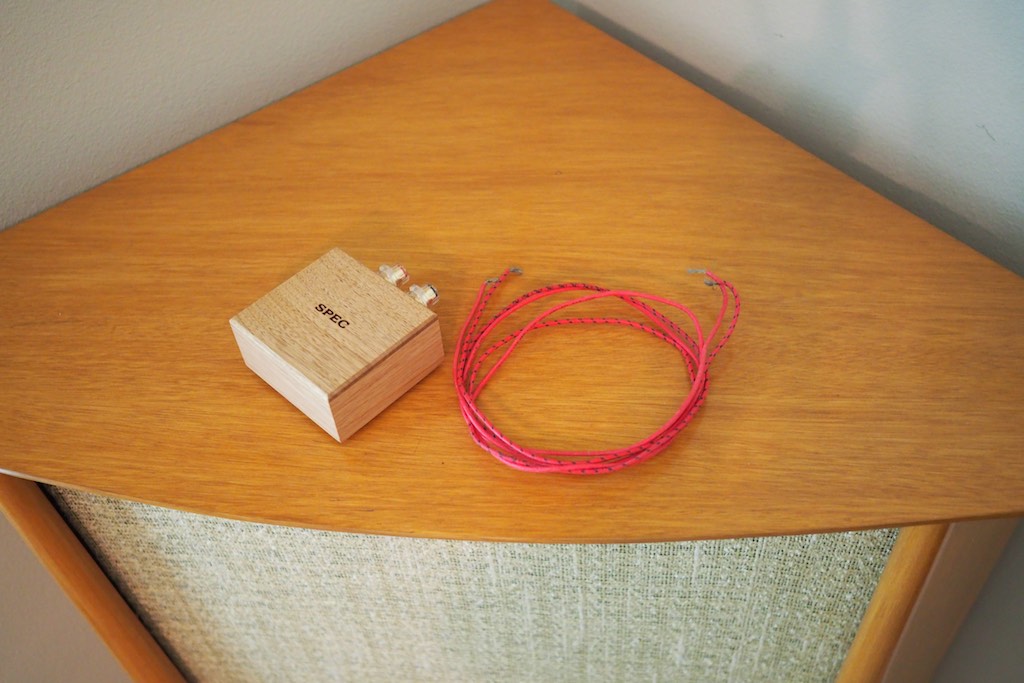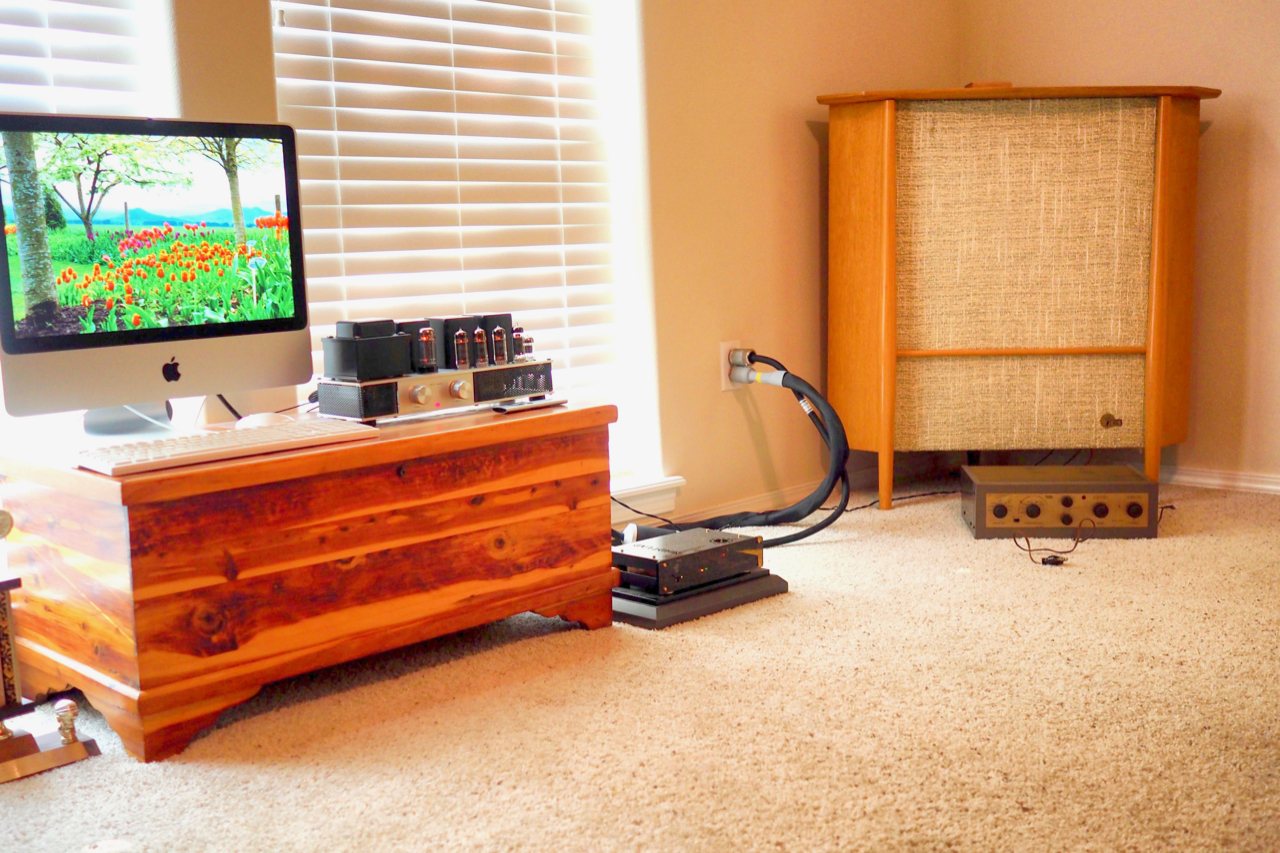I've been wanting to write a "First Impressions" update about the Still Audio EL84 integrated amplifier for a while now, but life has been busier than anticipated, so I'm a little behind writing-wise.
Many of you know of my affection for EL84 amplifiers, and I've been very impressed with the performance of the different ones I've listened to music with over the years, like the Almarro A205A single-ended pentode EL84 integrated amplifier, the Tom Evans Audio Design Linear A hybrid EL84 stereo amplifier, and the vintage Fisher SA-100 stereo amplifier, for a few examples.
There's just a special magic that goes along with the EL84 pentode vacuum tube, whether it be in a triode circuit, a pentode circuit, or an ultra-linear circuit, like that of the Still Audio EL84 integrated amplifier.
I'm really impressed by what I've been hearing from Mark Still's EL84 integrated amplifier powering my vintage Altec 832A Corona loudspeakers that I bought from LA Jazz Audio, shown in my living room in the photo above, but since moved into my bedroom system where they've really excelled placed into the room corners.
The room is too wide to get both Corona's gracefully into a single single photo, so hopefully the two photos below will give you a better idea of speaker placement.
Intrigued with the Still Audio EL84 integrated amplifier, I wanted to interview Mark Still and find out more about his design goals for the amplifier.
Mark told me:
"I started designing this amplifier in January 2017. I wanted to build an integrated type amp that would fit into spaces that most high end amplifiers wouldn't. I also wanted it to have a good amount of power, more than a typical SET amplifier could deliver. I wanted to create something that didn't currently exist and could win an industrial design award. It had to be a work of art and it had to be very high quality. The shape of the amp was of prime concern. I have always been a fan of amps that were long and thin like the Quad, some of the old Fisher's, and others. That is where the initial shape idea came from. Some other aspects of the design were inspired by the late and great Don Garber. What a great designer, he will be missed!"
"Modern day systems don't require a lot of inputs, and a good majority of modern systems only use two inputs for a DAC and a phono stage, so that's what I did, and provided two inputs. I wanted to keep it simple and easy, and to fit today's systems needs. For outputs I chose to include 4 Ohm, 8 Ohm, and 16 Ohm outputs, because a lot of speakers favored by those with low-powered amplifiers are either 8 Ohm or 16 Ohm. There's very few 4 Ohm loudspeakers out there, but I chose to offer all the modern speaker impedance options."
I asked Mark to elaborate a little on his circuit design for the Still Audio EL 84 integrated amplifier:
"The input stage consists of a 12AU7 phase inverter. The 12AU7 was chosen because of its high current capabilities and can easily drive a pair of EL84's to full output. Because of this it's a great tube for phase inverter duties. The output stage consists of a pair of EL84's pentodes connected in ultra-linear (UL) mode to the output transformer, and no negative feedback is applied. This requires a very high quality transformer so Hashimoto transformers where chosen for the job. Each channel is idling at ~81mA. Each of the EL84's are cathode biased at ~39mA and the 12AU7 is ~3mA. This circuit can output ~10 Watts in UL operation. While the EL84 is capable of 15-20 watts the distortion goes up significantly when UL operation is not used. I chose this mode because I wanted very low distortion. All of the tubes are running at or below spec so vintage tubes can be used without worry of burning them up and they all should last for a very long time."
"The power supply uses a large 300mA transformer, into the 5AR4 rectifier tube that has output capability of 220+mA into the choke capable of 300mA. From there each channel is split off into it's own set of low ESR reservoir caps to supply each channel. I chose to use "banks" of smaller caps, 47uF or 56uF, rather than a very large single cap because they are capable of filling faster with each mains cycle. There are no resistors in the power supply for the output stage. Only one to drop the voltage and separate the phase inverter that also has its own reservoir cap. This gives the power supply very low impedance contributing to the amplifiers speed and agility. The power supply can supply both channels at full output and run at about 50% giving it a good amount of head room."
"The splitter/driver stage is a paraphase type. I chose it because it is simple, straight forward, and works from 5k to 100k very well. I'm a big Magnavox fan and they used the paraphase in many of their designs. I know the benefits of fixed bias, and you know it's not that hard to adjust, but people today tend to shy away from amps they have to "mess with". A lot of audiophiles don't want to mess with adjusting the bias every few months, which is why I went with cathode bias. Each tube has its own cathode resister, precision 1% Mills. The tubes are AC heated as I think that DC heating make the amp sound too dull."
The excellent sonics and musicality of the Still Audio EL84 also made me curious about the components Mark chose for it, so I asked Mark to tell me a little more about his components choices:
"I've always been a fan of Hashimoto transformers, and their frequency response charts are flat from 5Hz to over 100Hz, giving me a wide range to work with. My resistors of choice for this circuit are the Takman carbon film resistors, and they sounded better in my sound tests than the Kiwame and Amtrans resistors I tried. The bypass capacitors are Nichicon FG series (Fine Gold) audio caps and are fantastic caps for bypass caps. The coupling caps are Mundorf's. They take a long time to break-in but have a very smooth sound with solid bass."
"As far as tubes go, every tube type I tried sounded different. I think people should use the tubes that sound best to them for their audio system. Psvane tubes with jazz are super sweet sounding, while the Sovtek EL84M's are great for rock and roll, for example. I chose the Mullard's because they gave a nice balance that falls between the PSvane's and Sovtek's. Mullard was also smart in putting the labeling on the correct side of the tube. Most of the time pins 4-5 heaters are on the outside of the chassis, which puts the labeling in front for you to see. I wish other tube manufacturers would do the same."
"The tube sockets are all PTFE with gold pins. The PTFE sockets hold the tube tighter, but they are softer than ceramic tubes sockets, so you have to be more careful not to the PTFE with the tube pins when changing tubes. If they get scratched it won't affect the sound or the tightness, just the esthetics."
"For the prototype I built on 3 turret boards so I could change out parts easily, but the time and effort to build it that way was not cost effective. I was very pleased when I did the first printed circuit board (PCB), where I used extra thick solid copper traces. The PCB tightened up the sound, and took it in the direction of being quieter and deeper. I'm thinking with the turrets for each component the signal had to go from component to turret to wire to turret to the next component, and with the PCB it was just component to copper to component, through one piece of thick solid copper. There is still a lot of point to point wiring, and I used silver over copper with PTFE insulation everywhere except from the IEC to power transformer, where I used 14 AWG copper."
I also asked Mark about his voicing strategy for his integrated amplifier:
"I wanted to voice the amp to sound like a new-style tube amplifier, more of a clean sound, but with that tube magic. I wanted it to have finesse while maintaining a calm sensibility and listenable quality about it. If an amplifier is too bright it will sound amazing at first, but it will eventually annoy the listener. I wanted the bass to go as low and flat as I could get it without compromising the rest of the audio band. I achieved an overall pleasurable listening experience, with great spatial image and a big wide and tall sound stage, so I feel I have succeeded in my voicing goals. As a reference I used a McIntosh MC275 power amplifier and C22 commemorative edition preamplifier. I have to say I've been pretty happy with the results."
One of the features I love about the Still Audio EL84 integrated amplifier is the remote volume control, which is something I wish every integrated amplifier and preamplifier included.
"I designed my own remote control system. I originally went out looking for one but could not find anything even close to my needs. I had to have a remote because I know people (including me) want that remote when the volume of this or that song needs to be just a little louder or quieter you can hit the button and get just what you want. It's pretty nice at the end of a long day."
"The remote is actually programmable to any remote but you would have to remove the bottom to push a small button on the remote board and watch the LED to program it. So easy though. Push the button, then push the volume up button 4 times until it flashes, then push the down button 4 times until it flashes and you're done - it's programmed to that remote. In the future I may put a hole in the bottom to allow the button to be pushed without removing the bottom."
At least for the moment, the sole source component in my vintage Altec Corona 832A loudspeaker-based audio system is my iMac streaming the fantastic Jazz24 stream through the Mhdt Paradisea+ USB DAC.
Getting some run-in time on the Still Audio EL84 are the new Acoustic Revive Absolute Power Cord and the new Acoustic Revive RCA Absolute FM Interconnects.
Speaker cable is Duelund DCA16GA tinned-copper wire, and a Locus Design Group Polestar USB interconnect links the iMac to the Mhdt Lab Paradisea+ USB DAC.
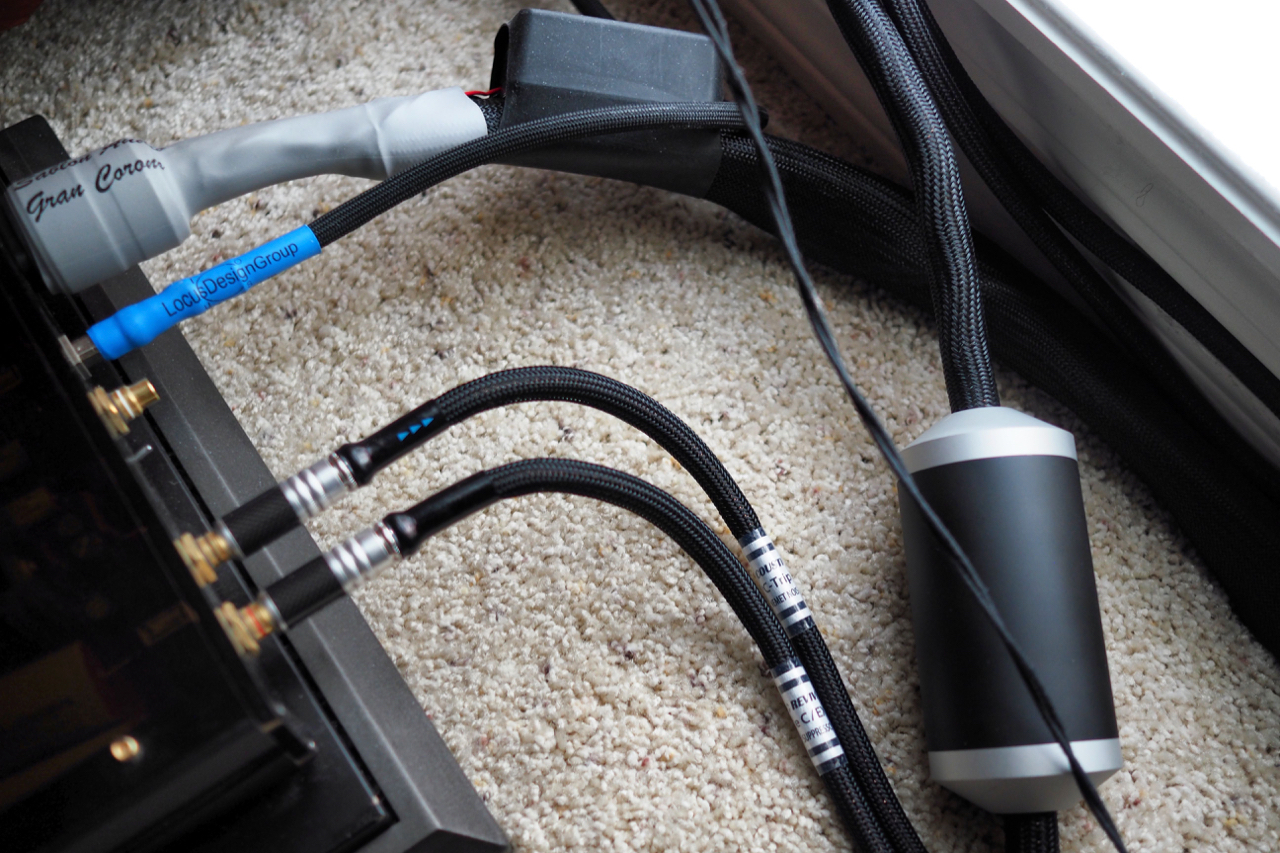
Sablon Audio Gran Corona power cord with special filter for digital, Polestar USB interconnect, and Acoustic Revive RCA Absolute FM interconnects.
On my vintage Altec 832A Corona loudspeakers I used the custom pair of Spec RSP-AZ9EX Real Sound Processors that Yazaki-san made for them - they make for a nice improvement! The RSP-AZ9EX Real Sound Processors are connected to my Corona's with vintage Western Electric WE16GA tinned-copper wire.
Ok, now for some first listening impressions. First of all, the Still Audio EL84 integrated amplifier's 10 watts per channel output sounds massively powerful on my vintage Altec Corona 832A loudspeakers, and I'm easily able to achieve live-like listening levels with it - that's a important plus for musical enjoyment in my book.
The Still Audio EL84 integrated amplifier is much more evenly balanced bass-to-treble than my Almarro EL84 integrated amplifier. In fact I didn't realize the full extent of the superb bass quality of my Altec Corona 832A loudspeakers until I put the Still Audio EL84 into the system, and its bass quality and quantity are at a significantly higher level of performance than the Almarro EL84.
The Still Audio EL84 integrated has a beautifully voiced mid-range and high-frequency presentation that is timbrally realistic, tonally beautiful, has a captivating level of naturally resolved nuance, and an overall musicality that makes it very rewarding to listen to to music with.
My vintage Altec Corona 832A loudspeakers are all about the tone and feeling in music, and they have an intensely musical presentation that I think most music lovers would "kill for" in their home audio system. The Still Audio EL84 amplifier really complements and enhances the Altec's overall musicality, providing a truthful and engaging portrayal of beat, rhythm, melodies, harmonies, and dynamics.
My first listening impressions are very positive, with the Still Audio EL84 integrated amplifier providing a combination of musicality and sonics that I find very alluring, and all at a very fair $2895 USD considering the incredible parts quality and the hand-crafted artisanal nature of the amplifier.
Well that's all for now. For my next listening impressions update I plan on listening to the Still Audio EL84 integrated amplifier in place of my Leben CS-600 integrated amplifier in my vintage Altec A5 Voice of the Theatre loudspeakers-based audio-visual system, which should be a lot of fun!
As always, thanks for stopping by, and may the tone be with you!





